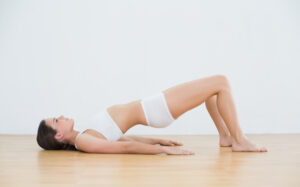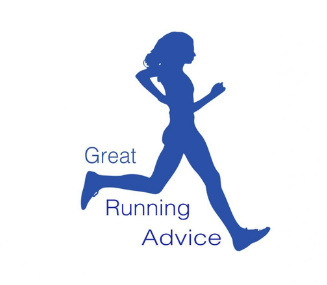Running is a popular exercise for many people. It’s an excellent way to stay fit, healthy, and relieve stress. However, runners often experience tight muscles, injuries, and imbalances. One effective way to counteract these issues is by incorporating yoga into their routine, specifically the bridge
Improves Core Strength
The bridge pose targets your core muscles, including your abdominals, lower back, and glutes. These muscles play a crucial role in running. A strong core helps maintain good posture, prevents injuries, and enhances overall performance. By practicing the bridge pose regularly, runners can improve their core strength and running efficiency.
Enhances Hip Flexibility
Tight hip flexors are common among runners. This tightness can limit your stride length, reduce power, and lead to injuries. The bridge pose stretches and opens the hip flexors, increasing flexibility. As a result, runners can enjoy a greater range of motion, improved performance, and reduced injury risk.
Reduces Lower Back Pain
Running puts stress on your lower back, which can cause pain and discomfort. The bridge pose helps to alleviate lower back pain by strengthening the supporting muscles. This pose also stretches tight muscles, providing relief and promoting a healthy back.
Increases Glute Activation
The glutes play a key role in running, propelling you forward with each stride. However, weak or underactive glutes can lead to poor running form and injuries. The bridge pose helps activate and strengthen the glutes, ensuring they function optimally during running. This can improve your running form, prevent injuries, and increase speed.
Promotes Balance and Stability
Running requires balance and stability, especially on uneven terrain. The bridge pose strengthens the muscles responsible for maintaining balance, such as the hips and core. By practicing this pose, runners can enhance their stability and reduce the risk of falls or injuries.
Boosts Circulation and Recovery
During the bridge pose, your heart is elevated above your head. This position encourages blood flow to the upper body, boosting circulation. Improved circulation helps deliver oxygen and nutrients to muscles, promoting recovery and reducing muscle soreness. This can be especially beneficial for runners after a hard workout or race.
Calms the Nervous System
Running can sometimes lead to stress and anxiety, especially before a race or during a challenging workout. The bridge pose helps to calm the nervous system, reducing stress and anxiety. This relaxation can improve mental focus, promote better sleep, and enhance overall well-being.
How to Perform the Bridge Pose
Follow these simple steps to perform the bridge pose correctly:
- Lie on your back with your knees bent, feet flat on the floor, and arms by your sides.
- Place your feet hip-width apart, close to your buttocks.
- Inhale and push through your heels, lifting your hips towards the ceiling.
- Keep your thighs parallel, and avoid letting your knees splay outwards.
- Engage your glutes and core muscles, supporting your weight evenly.
- Hold the pose for 5-10 breaths, then slowly lower your hips back to the floor.
Modifications and Variations
The bridge pose can be modified to suit different fitness levels and needs. Here are some variations to try:
- Block Support: Place a yoga block under your sacrum for extra support. This modification is suitable for beginners or those with limited strength or flexibility.
- One-Legged Bridge: While lifting your hips, extend one leg straight, keeping it parallel to the ground. This variation challenges your balance and targets one glute at a time.
- 3. Full Wheel: For a more advanced variation, try the full wheel pose. From the bridge pose, place your hands beside your ears, fingers pointing towards your feet. Push through your arms and legs, lifting your chest and head off the floor. This variation requires more strength and flexibility but provides a deeper stretch.
- Clasped Hands: While in the bridge pose, clasp your hands underneath your body and push your shoulders down into the floor. This variation increases the stretch in your chest and shoulders.
- Bridge with Resistance Band: Place a resistance band around your thighs, just above the knees. Press your knees out against the band while lifting your hips. This variation adds a challenge to your glute muscles and helps to activate them even more.
Incorporating the Bridge Pose into Your Routine
To enjoy the benefits of the bridge pose, consider incorporating it into your running routine. Here are a few suggestions:
- Pre-Run Warm-Up: Include the bridge pose in your warm-up routine to activate your glutes and hips before running.
- Post-Run Cool-Down: Practice the bridge pose after your run to stretch tight muscles, promote recovery, and reduce soreness.
- Yoga for Runners: Participate in a yoga class or follow an online video specifically designed for runners. These classes often include the bridge pose and other beneficial poses to support your running practice.
- Cross-Training: Incorporate the bridge pose into your cross-training routine, such as strength training or Pilates, to target specific running muscles and improve overall fitness.
Conclusion
The bridge pose offers numerous benefits for runners, including improved core strength, enhanced hip flexibility, reduced lower back pain, increased glute activation, better balance and stability, boosted circulation and recovery, and a calmer nervous system. By incorporating the bridge pose into your running routine, you can enjoy better performance, prevent injuries, and maintain a healthy body and mind. Give the bridge pose a try and discover the positive impact it can have on your running and overall well-being.
